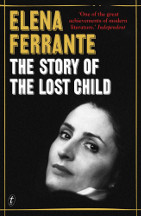The Story of the Lost Child by Elena Ferrante

Neapolitan series. Text, 2015. ISBN 9781925240511
(Age: Adult - senior secondary) This is the concluding volume in
Elena Ferrante's Neapolitan series. The first three books
show Lenu and Lila growing up in a slum in Naples. Though Lila has
an audacious intelligence she leaves school early, marries a brute
and works at a demeaning job in a sausage factory while Lenu forces
herself on through university and becomes a writer about feminist
politics when she marries into a northern family with influence. In
this final volume the action returns to Naples which is as turbulent
and corrupt as ever. Lenu, now a successful writer and having an
affair with Nino, her childhood friend who is now a brilliant and
radical academic, returns to the slum district where they grew up.
She continues to have a tempestuous relationship with Lila, who now
is mastering the new technology of computing. Lenu's family and
friends initially reject her but eventually accept her new situation
and enjoy her success although they show no interest in her writing
as such. Lila is now a respected business woman, while the Fascist
gangsters the Solaro brothers are still her declared enemies. When
Lenu realizes that Nino has always been and always will be
unfaithful she rejects him and grows closer to Lila, particularly as
they are both pregnant. The babies, girls, seem destined to relive
the friendship of their mothers, especially as Tina, Lila's child,
is precocious and beautiful, as Lila always was, while Imma is more
insecure as Lenu has always been. However, Tina, aged four,
disappears from the street and is never found. The Solaro brothers
have clashed with Lila and her partner and are suspected but seem to
be determined to help. Lila's behaviour becomes more erratic while
Lenu's career continues to flourish. Lila becomes more nihilistic
and questions the value of life; she examines the history of Naples
and finds endless examples of cruelty being replaced with kindness
which is then swamped by more cruelty.
In the background of the novel the politics of Naples and Italy
repeat this pattern. The 1950's and '60's struggle between the
Communists and the Fascists is replaced by different political
allegiances but the one point of consistency is corruption which
reaches into even the most respected levels of academia as well as
politics and business. Lenu's mother-in-law, an aristocrat from an
'old' family, blames those with intelligence but with no traditions.
Lenu realizes that she herself is still an outsider in some cultural
circles, but also that all in the community condone corruption by
turning a blind eye to it. Lila, however, believes that there are no
options as the law is ineffectual. Lenu's daughters leave Italy and
she herself leaves Naples. She has her greatest success when she
writes the story of her friendship with Lila and the loss of Lila's
child, which parallels the story of the two dolls the girls lost in
childhood.
The writing is powerful and fierce in its portrayals of love,
loyalty, friendships, family relationships and politics. The themes
are most particularly female friendship, the relationships between
mothers and daughters and the influence of place. The coarse
language and attitudes of the local Neapolitans is vividly captured
as is the hypocrisy of the cultured classes. Ferrante juxtaposes the
crudeness of the local dialect with the purity of Italian to
emphasize class distinctions but while social position and morality
are not necessarily linked leaving the slums of Naples tends to be
regarded as a victory.
The novel can be read as a stand alone and is recommended for
competent readers. It powerfully deals with the issues of women's
friendships and family lives, and with the political and social
issues in Italy in the second half of the twentieth century.
Jenny Hamilton